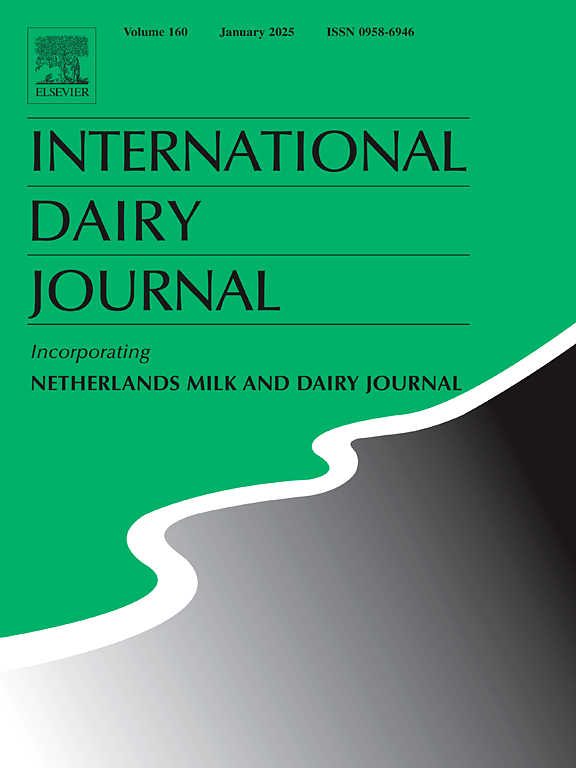Recombined milk cheeses: A review
IF 3.1
3区 农林科学
Q2 FOOD SCIENCE & TECHNOLOGY
引用次数: 0
Abstract
The manufacture of cheese from recombined milk is particularly justified in developing countries facing a shortage of milk for dairy product manufacture, including cheese. Homogenization is essential for preparing recombined cheeses, offering certain advantages while posing challenges. Recombination technology for cheese production can yield economic benefits in some cases. Recombined milk can produce fresh cheeses without much difficulty, but it presents challenges for stretch curd cheeses and those requiring specific functional properties. Key factors influencing cheese quality include the selection of milk powder and control of homogenization conditions. The development of UF retentate/pre-cheese powder has enabled the production of high-solids cheese from recombined milk with minimal to no whey drainage. Domiati, Feta, Cottage, Cream, White and Mozzarella cheeses have been successfully prepared using recombination technology.
复合牛奶奶酪:综述
在面临包括奶酪在内的乳制品生产所需牛奶短缺的发展中国家,用复合牛奶生产奶酪尤其合理。均质是制备复合奶酪的关键,在提供某些优势的同时也带来了挑战。在某些情况下,奶酪生产中的复合技术可以产生经济效益。重组牛奶可以毫不费力地生产新鲜奶酪,但它对拉伸凝乳奶酪和那些需要特定功能特性的奶酪提出了挑战。影响奶酪品质的关键因素包括奶粉的选择和均质条件的控制。UF保留物/预奶酪粉的开发,使得从重组牛奶生产高固体奶酪,乳清流失很少甚至没有。Domiati, Feta, Cottage, Cream, White和Mozzarella奶酪已经成功地使用重组技术制备。
本文章由计算机程序翻译,如有差异,请以英文原文为准。
求助全文
约1分钟内获得全文
求助全文
来源期刊

International Dairy Journal
工程技术-食品科技
CiteScore
6.50
自引率
9.70%
发文量
200
审稿时长
49 days
期刊介绍:
The International Dairy Journal publishes significant advancements in dairy science and technology in the form of research articles and critical reviews that are of relevance to the broader international dairy community. Within this scope, research on the science and technology of milk and dairy products and the nutritional and health aspects of dairy foods are included; the journal pays particular attention to applied research and its interface with the dairy industry.
The journal''s coverage includes the following, where directly applicable to dairy science and technology:
• Chemistry and physico-chemical properties of milk constituents
• Microbiology, food safety, enzymology, biotechnology
• Processing and engineering
• Emulsion science, food structure, and texture
• Raw material quality and effect on relevant products
• Flavour and off-flavour development
• Technological functionality and applications of dairy ingredients
• Sensory and consumer sciences
• Nutrition and substantiation of human health implications of milk components or dairy products
International Dairy Journal does not publish papers related to milk production, animal health and other aspects of on-farm milk production unless there is a clear relationship to dairy technology, human health or final product quality.
 求助内容:
求助内容: 应助结果提醒方式:
应助结果提醒方式:


